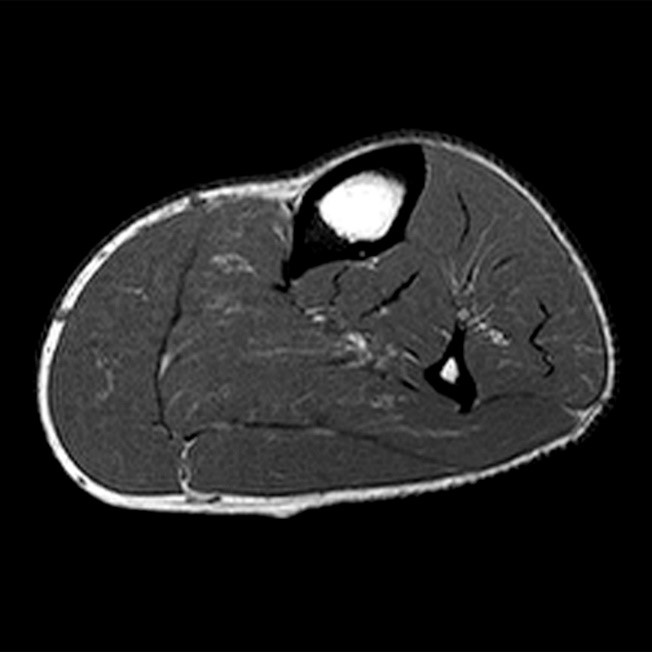

Given the history of complementary diffusion and relaxation imaging approaches in muscle, diffusion-weighted imaging (DWI) may also have diagnostic value in CECS. Frequency selective or short time inversion recovery approaches alone can suffer from transmit field inhomogeneity or low signal-to-noise ratio (SNR), while spectral adiabatic inversion recovery (SPAIR) 20 combines both approaches for more effective performance. Turbo spin echo (TSE) T2w sequences are often used for this characterization, and uniform fat saturation is crucial to separate evaluation of all muscle compartments. In the CECS population, elevated T2w signal intensity have correlated with ICP and CECS severity 19. Multiple factors may be involved in CECS, including vascular deficits, elevated compartmental pressure, muscular edema, myofiber dilation/separation, and membrane degradation. Therefore, noninvasive magnetic resonance imaging (MRI) markers can be very attractive alternative or supplemental diagnostic tools. Both steps can be invasive and/or debilitating, and are not always successful. The standard diagnosis of CECS involves intracompartmental pressure (ICP) measurement, and fasciotomy is a common surgical intervention. In chronic exertional compartment syndrome (CECS) 15- 17, muscle compartments retain excess fluid following exercise leading to elevated pressure, reduced perfusion, pain, and possibly ischemic injury 18. Vascular contributions to diffusion contrast are also recognized in skeletal muscle 13, 14. The increase of apparent diffusion with exercise is also well established, and has been observed to correlate with T 2 increases in the same subjects 11, 12, although its sensitivity to compartmentation and to temperature differ from that of relaxation. Quantitative relaxation imaging in muscle suggests intra/extracellular compartmentation determines multiexponential T 2 behavior (although macromolecule hydration layers may also play a role), and exercise may involve exchange between these compartments. In healthy subjects, elevated muscle signal intensity on T 2-weighted (T2w) imaging following exercise is a well-known phenomenon with multiple possible contributions 8- 10. Ischemia 6, inflammation, and injury 7 can result in myofiber damage, disorganization, or deterioration and are therefore detectable via DTI metrics such as mean diffusivity (MD) and fractional anisotropy (FA).

© 2013 Wiley Periodicals, Inc.ĭiffusion tensor imaging (DTI) 1 provides quantitative markers of tissue microstructure and anisotropy, and as such can serve as a diagnostic probe of pathologic conditions affecting skeletal muscle fibers 2- 5. Future studies may explore its utility in predicting response to treatment. ConclusionĭTI shows promise as an ancillary imaging method in the diagnosis and understanding of the pathophysiology in CECS. Nineteen of 98 patient compartments were classified as CECS on T2w.

Longitudinal diffusion responses were significantly smaller than transversal diffusion responses ( P < 0.0001). ResultsĪll diffusivities significantly increased ( P < 0.0001) and FA decreased ( P = 0.0014) with exercise. Mixed model analysis of variance compared subject groups and compartments in terms of response factors (post/pre-exercise ratios) of DTI parameters. Longitudinal and transverse diffusion eigenvalues, mean diffusivity (MD), and fractional anisotropy (FA) were measured in seven calf muscle compartments, which in patients were classified by their response on T2w: normal (20% change). Using an Institutional Review Board (IRB)-approved, Health Insurance Portability and Accountability Act (HIPAA)-compliant protocol, spectral adiabatic inversion recovery (SPAIR) T2w imaging and stimulated echo DTI were applied to eight healthy volunteers and 14 suspected CECS patients before and after exertion.

To evaluate the performance of diffusion tensor imaging (DTI) in the evaluation of chronic exertional compartment syndrome (CECS) as compared to T 2-weighted (T2w) imaging.


 0 kommentar(er)
0 kommentar(er)
